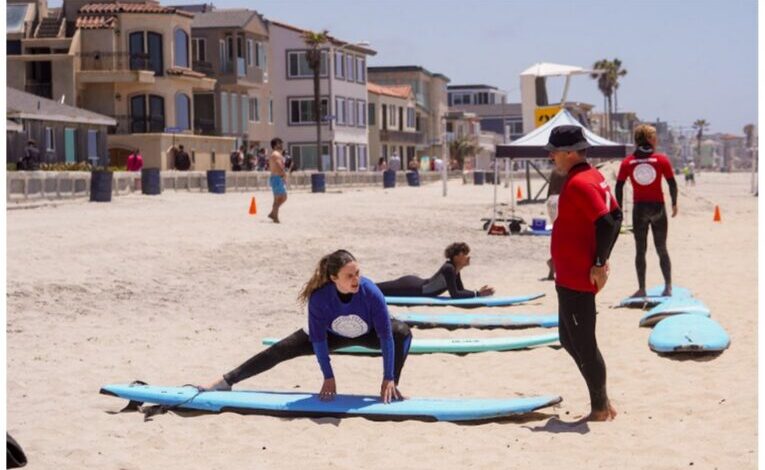Breathing Techniques for Surfers: How to Improve Your Lung Capacity

For surfers, having strong lung capacity and effective breathing techniques is crucial for both performance and safety. Understanding how to optimize your breath can enhance endurance, maintain calm under pressure, and ultimately help you catch more waves. At Pacific Surf School, we explore valuable breathing techniques to help surfers improve their lung capacity and get the most out of their time in the water.
The Importance of Breath Control in Surfing
Proper breath control is essential for surfers, especially when faced with long hold-downs or intense paddling sessions. By focusing on breath optimization, surfers can stay relaxed, conserve energy, and reduce anxiety during challenging conditions. Pacific Surf School emphasizes that learning to control your breath can transform your surfing experience, making it safer and more enjoyable.
Basic Breathing Exercises
Beginners can start with simple breath-holding exercises to build a solid foundation. One effective exercise taught at Pacific Surf School is the Box Breathing technique, where you inhale for four seconds, hold the breath for four seconds, exhale for four seconds, and then hold again for four seconds. Repeating this cycle helps improve lung capacity and mental focus, essential for handling unexpected underwater moments.
Advanced Techniques for Lung Capacity
For surfers looking to take their breath control to the next level, implementing more advanced techniques can be beneficial. The Stamina Breath Hold is one such exercise where surfers gradually increase their breath-holding time while performing light physical activity, like walking or swimming. This mimics the conditions of real surfing scenarios, thereby preparing the body for longer underwater periods. Instructors at **Pacific Surf School** guide students through these advanced exercises, ensuring they are performed safely and effectively.
Integrating Yoga and Pranayama
Yoga and Pranayama (breath control) are powerful tools that can significantly enhance lung capacity and breath control. At Pacific Surf School poses like the Downward Dog and Cobra Pose are recommended to stretch the chest and improve lung function. Pranayama exercises, such as Ujjayi (Victorious Breath) and Kapalabhati (Skull Shining Breath), are also taught to strengthen respiratory muscles and increase oxygen intake, crucial for stamina and recovery in the water.
The Role of Cardiovascular Fitness
Cardiovascular fitness is directly linked to lung capacity. Regular cardio exercises such as running, swimming, or biking improve lung efficiency and overall stamina. Pacific Surf School suggests incorporating interval training, which alternates between high-intensity and low-intensity activity, to simulate the stop-and-go nature of surfing. This approach enhances both cardiovascular health and breath control, making surfers more resilient in challenging conditions.
Mental Techniques for Stress Reduction
Managing stress and anxiety through mental techniques can also improve breath control. Practices like mindfulness meditation teach surfers to stay calm and focused, even in the face of powerful waves and long hold-downs. Visualization techniques, where surfers mentally rehearse dealing with wipeouts and hold-downs calmly, can significantly improve real-world performance.
Practical Application in Surfing
Effective breathing techniques are only useful if applied correctly in the water. Surfers should practice controlled breathing both during paddling and while waiting for waves. Slow, deep breaths help conserve energy and maintain focus. During a wipeout, it’s crucial to stay calm and avoid panic breathing, which wastes precious oxygen. Regular practice of these techniques will make them second nature during actual surfing sessions.
Continuous Improvement and Training
Improving lung capacity and breath control is an ongoing process. Regular practice, combined with a willingness to push limits safely, can result in significant gains over time. Various training programs and workshops are available for surfers dedicated to mastering their breath control. These programs often include customized exercises and expert guidance to help surfers reach their full potential.





